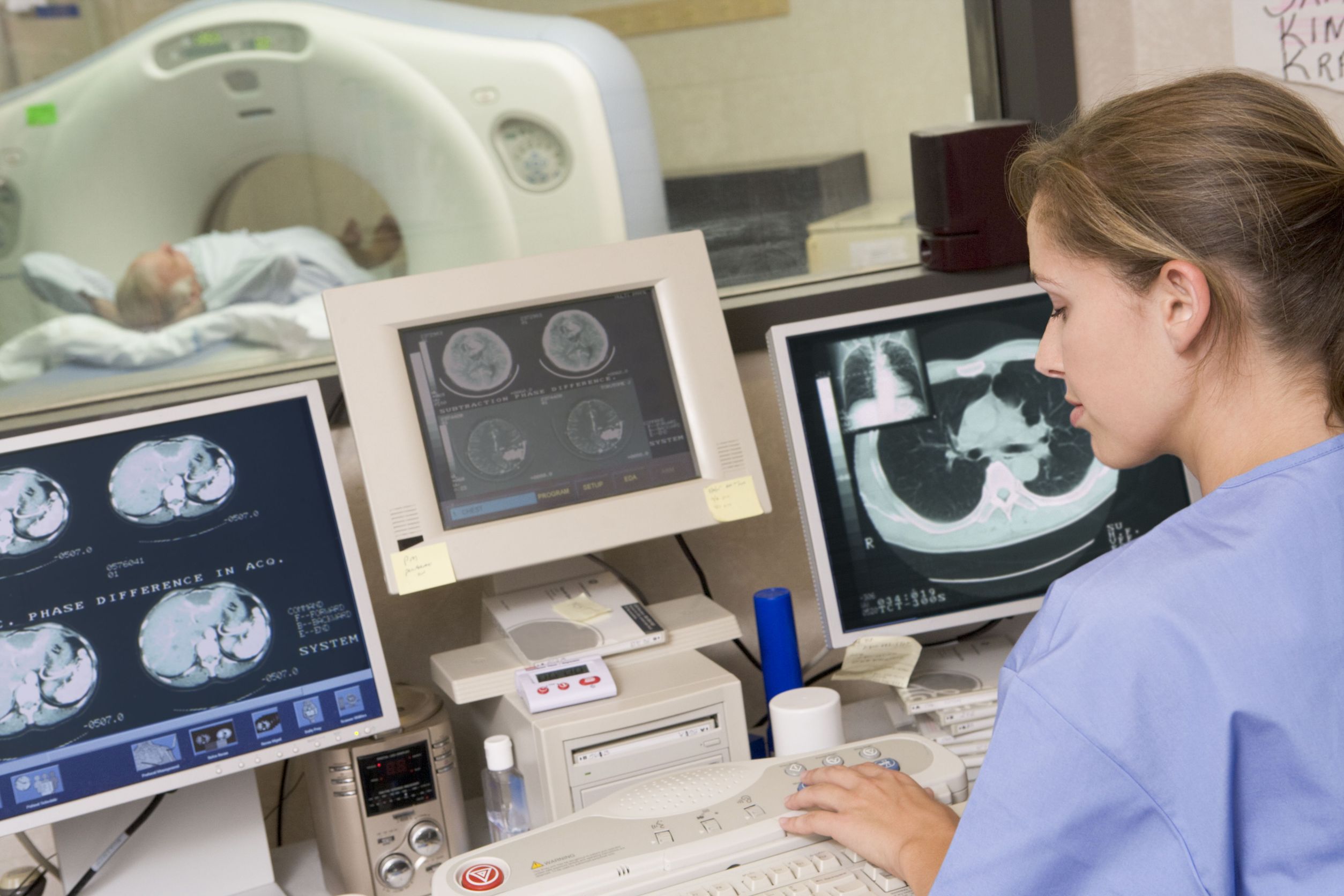This nuclear medicine and computerized tomography exam is used to detect cancerous activity in the patient’s body. It provides a diagnosis with 90-95% accuracy compared to 68-70% accuracy acquired from a CT when used as the only method for diagnosis.
How does a PET CT SCAN work?
The image provided by the PET CT combines two images in order to create one hybrid image made up by:
- PET: Delivers a physiologic and molecular activity image of the body
- CT: Delivers an anatomic image of the patient’s tissues, bones, brain, thorax, etc.
There are many worldwide researches on discovery and development of drugs used in a PET CT SCAN, nonetheless most of them are currently undergoing investigation. The only completely approved drug, used in 99% of the PET CT studies worldwide is the isotope Flúor18/FDG (fludeoxyglucose).
How is a PET CT SCAN performed?
A radioactive isotope material is injected into the patient, this material issues positive electrons and these positrons crash with the negative electrons present in the patient’s body producing x-rays that provide an image that allows discovery of chemical abnormal activity in the body.
This image is possible due to presence of cancerous activity in a determined location of the patient’s anatomy. The PET CT SCAN can detect abnormal concentrations created by glucose accumulation, which is the result of cancerous cells consuming more glucose than the rest of the body.
In addition to the image of the patient´s chemical/hormonal activity the CT provides a structural vision of the anatomy which allows visualization of tumors or abnormal masses found in the patient’s body. Many countries only use the CT, nevertheless the results are not so accurate due to the imminent risk of confusing a benign tumor or cyst with a malignant one or vice versa.
The PET CT SCAN combines both images in order to come up with a map of the whole body which allows diagnosing a potential cancer with a much higher accuracy since information is collected from both views of the patient’s anatomy.
What diseases can be found in a PET CT SCAN?
This study can discover and identify:
- Neoplasms/tumors even at early stages
- Cancer: breast, pancreas, lung, lymphoma, prostate, etc.
- In addition, it allows studying the extension and response of these cancers.
- Allows identifying changes in Alzheimer’s disease since the neurons that were damaged by the disease and the level of glucose descends at the damaged places and therefore are easily identified in the scan. This allows for treatment of the disease, thus controlling it in the best way possible.
- Infections (upon fevers due to unknown causes).
- Currently there are numerous investigations being held in order to allow diagnosis of other immunological diseases or extraordinary tumors. It is a great molecular study of diseases of the human being.
What is the difference between a PET CT and an MRI?
There is false belief that a Magnetic Resonance and a PET CT are the same, both providing equal results. Even though they are similar in one or two ways, they are very different and using an MRI as a substitute of a PET CT SCAN is not advisable since there is a very high risk of an inaccurate diagnosis.
An MRI consists on placing the patient in a magnetic field in order to visualize the anatomy at a molecular level; the patient’s tissues, fat, muscle, water and calcium. This shows presence of calcifications, fat or blood in a tumor or if there is bleeding inside the brain. Basically an MRI analyzes the anatomic image of the body with certain molecular components.
Sometimes a patient may advised to undergo an MRI after a PET CT SCAN in order to acquire a more profound view of a certain aspect, which could be complementary but never equal.
If you wish to find cancer detection and treatment options in Monterrey, access the tab titled PET CT SCAN in Monterrey.
You can also read our articles on the PET SCAN:
Source:
Dr. Jorge Fernandez De la Torre, Director of Diagnostic Radiology and Imaging of the Hospital San José



